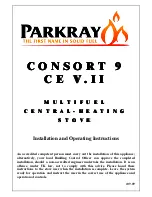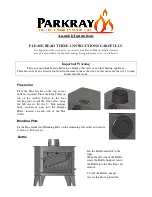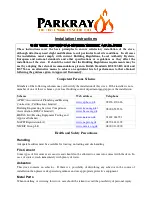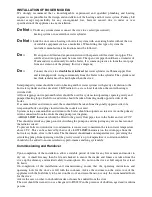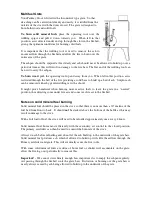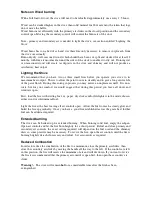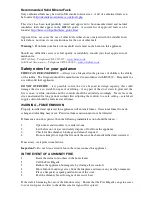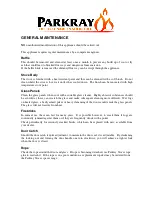
INSTALLATION OF BOILER MODELS
We strongly recommend that a knowledgeable, experienced and qualified plumbing and heating
engineer is responsible for the design and installation of the heating and hot water system. Parkray Ltd
cannot accept responsibility for any consequential loss, however caused, due to under or over
specification of the appliance in any installation.
Do Not –
Under any circumstances connect the stove to a sealed (pressurised)
heating system or unvented hot water cylinder.
Do Not –
Link the stove into a heating or hot water system with an existing boiler without the use
of suitable equipment such as a neutralizer. When fitting this type of system the
neutralizer manufacturers instructions must be followed.
Do –
Fit an open cold feed and expansion cistern with separate cold feed and vent pipes. The
cold feed and vent pipes must be unvalved. The open vent pipe should have a diameter of
22mm and rise continuously from the boiler. It is common practice to form the vent pipe
from an extension of the primary flow (see diagram).
Do –
Connect the stove to a
double feed, indirect
hot water cylinder via 28mm copper flow
and return pipework, rising continuously from the boiler to the cylinder. The cylinder and
heat leak radiator must be sited higher than the stove.
Semi pumped systems should be used on heating and hot water systems with gravity circulation to the
hot water cylinder and one unvalved 2 KW radiator to act as a heat leak when the central heating is
switched off.
All four tappings on wraparound boilers should be used for systems incorporating separate gravity and
pumped heating loops. Each flow and return should be taken from diagonally opposite sides of the
boiler.
If a common flow and return is used, these should also be taken from diagonally opposite sides of a
wraparound boiler, and plugs inserted into the sockets not used.
Systems using a common flow and return to the boiler should incorporate an injector tee on the primary
return connection from the central heating pump (see diagram).
A HIGH LIMIT thermostat should be fitted to the gravity flow pipe close to the boiler and set at 90°C.
This should override any pump control, switching the pump on and dissipating any excess heat around
the radiator circuit.
To prevent boiler corrosion due to condensation it is necessary to maintain the return water temperature
above 45°C. This can be achieved by the use of a LOW LIMIT thermostat on the return pipe from the
hot water cylinder, close to the boiler. The thermostat should make on temperature rise, preventing the
circulating pump from operating until the gravity circuit is up to temperature. A corrosion inhibitor
should also be added to ensure satisfactory performance and long system life.
Commissioning and Handover
Upon completion of the installation, allow a suitable period of time for any fire cement and mortar to
dry out. A small fire may then be lit and checked to ensure the smoke and fumes are taken from the
stove up the chimney and emitted safely to atmosphere. Do not run the stove at full output for at least
24 hours.
On completion of the installation and commissioning, ensure that the operating instructions and
operating tools for the stove are left with the customer. Advise the customer on the correct use of the
appliance with the fuels likely to be used on the stove and warn them to use only the recommended fuels
for the stove.
Advise the user on what to do should smoke or fumes be emitted from the stove.
The user should be warned to use a fireguard to BS 6539 in the presence of children, aged and/or infirm
persons.

